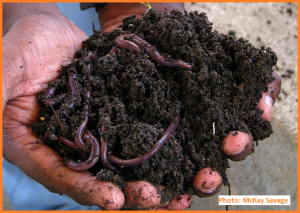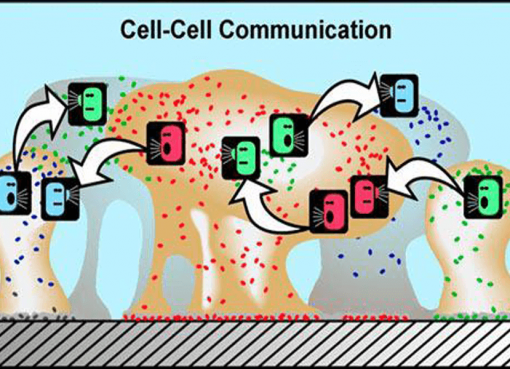Dr. Rajashree Kalita1, Dr. Tanmoyee Das1, Dr. Jitu Moni Das2 and Dr. Manoj Kr. Kalita2
1Internee student, Lakhimpur College of Veterinary Science, AAU, Joyhing, North Lakhimpur- 787051
2Assistant Professor, Department of ARGO, College of Veterinary Science, AAU, Joyhing, North Lakhimpur- 787051
Introduction
Artificial intelligence (AI) is increasingly becoming a cornerstone in veterinary science, particularly in the fields of gynaecology, andrology, and assisted reproductive technology (ART). AI has significantly transformed the way veterinary professionals approach the management of reproductive health in domesticated animals, both livestock and pet animals. Through its ability to analyze vast datasets, detect patterns, and automate complex processes, AI enhances fertility treatment, optimizes breeding, and improves overall reproductive health. The integration of AI in these areas has led to more efficient, precise, and sustainable practices in animal breeding and reproductive medicine.
AI in Veterinary Gynaecology
Veterinary gynaecology focuses on the female reproductive system, and AI has been a game-changer in diagnosing and treating reproductive issues in animals. One of the primary applications of AI is in estrus detection. AI systems equipped with sensors and machine learning algorithms track changes in behaviour, temperature, and activity to detect the optimal breeding time. This is especially valuable in large animal farms, such as cattle and horses, where precise timing for mating or insemination is critical for maximizing reproductive success.
Another significant AI application is in ultrasound imaging. Traditional ultrasound diagnosis requires expert interpretation, but AI-powered imaging systems can instantly analyze images for signs of reproductive disorders like ovarian cysts, uterine infections, or early pregnancy. Using deep learning models, AI identifies abnormalities more quickly and accurately than the human eye, allowing veterinarians to intervene earlier and improve the health and fertility outcomes for animals (Uppal et al., 2020).
AI in Veterinary Andrology
In andrology, which focuses on male reproductive health, AI has revolutionized sperm analysis. Traditional methods of sperm evaluation are time-consuming and subjective, but AI-driven systems can analyze sperm motility, morphology, and concentration more accurately and efficiently. These AI tools use machine learning algorithms to process large volumes of data related to numerous sperm samples, providing more consistent and precise evaluations (Kumar et al., 2020). Such advancements are crucial in optimizing breeding strategies, particularly in high-value animals like breeding bulls or stallions.
AI is also improving semen cryopreservation. The freezing and thawing process of sperm is highly delicate, and any mishandling can result in reduced fertility rates. AI models can optimize freezing and thawing protocols, ensuring higher sperm viability and better success rates in artificial insemination programs. Additionally, sexed semen is the ability to choose the sex of offspring and becomes more accurate with AI, enabling farmers and breeders to manage their herd or breed populations with greater precision.
AI in Assisted Reproductive Technology (ART)
Assisted reproductive technologies such as in vitro fertilization (IVF), embryo transfer (ET), and artificial insemination have dramatically improved reproductive success rates in animals. AI plays a pivotal role in enhancing these technologies. One of the most significant contributions is in embryo selection. AI systems use machine learning to evaluate embryos based on their morphology and developmental stage, increasing the likelihood of successful pregnancies. These systems help veterinarians choose the most viable embryos for transfer, reducing failure rates and improving overall outcomes (Haghighat et al., 2021).
AI has also enhanced the efficacy of selecting the embryo culture media by predicting the most suitable environment for embryo development based on real-time data. Using AI to manage ART protocols allows for more efficient and effective use of resources, while also improving the chances of successful pregnancies, particularly in endangered species and high-value animals (Bielanski et al., 2020).
In artificial insemination, AI is used to predict the optimal time for insemination by analyzing data such as hormonal fluctuations and behavioral patterns. By predicting the most fertile period, AI helps increase pregnancy rates and reduces the cost of failed inseminations. This is particularly valuable in both commercial livestock breeding and pet animal fertility management.
Latest AI Technologies in Veterinary Reproductive Health
Several cutting-edge AI technologies are being integrated into veterinary reproductive practices:
- Wearable Devices for Fertility Tracking: AI-powered wearables track physiological data such as body temperature, movement, and hormonal changes in real time. These devices are particularly useful for detecting estrus in both livestock and pets, providing accurate data for optimal breeding timing (McKinney et al., 2021).
- AI-based Reproductive Imaging: AI-driven imaging technologies, including deep learning models, are now being used to interpret ultrasound and other imaging data. These models analyze images more accurately than human technicians, detecting subtle changes in reproductive organs that might otherwise go unnoticed, and facilitate early intervention (Rohini et al., 2022).
- Robotic Surgery with AI: In more complex reproductive surgeries, such as embryo biopsies or ovarian tissue transplants, AI-powered robotic systems assist in performing these procedures with heightened precision, minimizing human error, and improving outcomes.
Conclusion
Artificial intelligence is revolutionizing veterinary gynaecology, andrology, and assisted reproductive technologies, significantly enhancing reproductive health management in both domesticated and pet animals. AI is improving estrus detection, optimizing sperm analysis, and enabling more accurate embryo selection and insemination practices. These innovations not only lead to improved fertility outcomes but also contribute to the conservation of endangered species and enhance breeding efficiency in commercial livestock. As AI continues to advance, its applications in veterinary reproductive medicine promise to make animal breeding more efficient, cost-effective and humane, ensuring better health and well-being for both domesticated and pet animals.
References
Bielanski, A., et al. (2020). Application of artificial intelligence in assisted reproductive technologies. Journal of Veterinary Science, 17(2): 103-109.
Haghighat, N., et al. (2021). AI in veterinary reproductive medicine: enhancements and future trends. Animal Reproduction Science, 232: 105-118.
Kumar, R., et al. (2020). Artificial intelligence in sperm analysis: current trends and future prospects. Veterinary and Comparative Reproduction, 45(3): 201-215.
McKinney, E., et al. (2021). Wearable devices for estrus detection in livestock: impact of ai technologies. Journal of Animal Reproduction Science, 200: 56-64.
Rohini, S., et al. (2022). AI in reproductive imaging: a step toward precision medicine in veterinary practice. Veterinary Imaging and Surgery, 31(4): 77-89.
Uppal, S., et al. (2020). AI in veterinary ultrasound imaging: transforming animal health. Veterinary Technology and Innovation, 6(1): 45-60.




